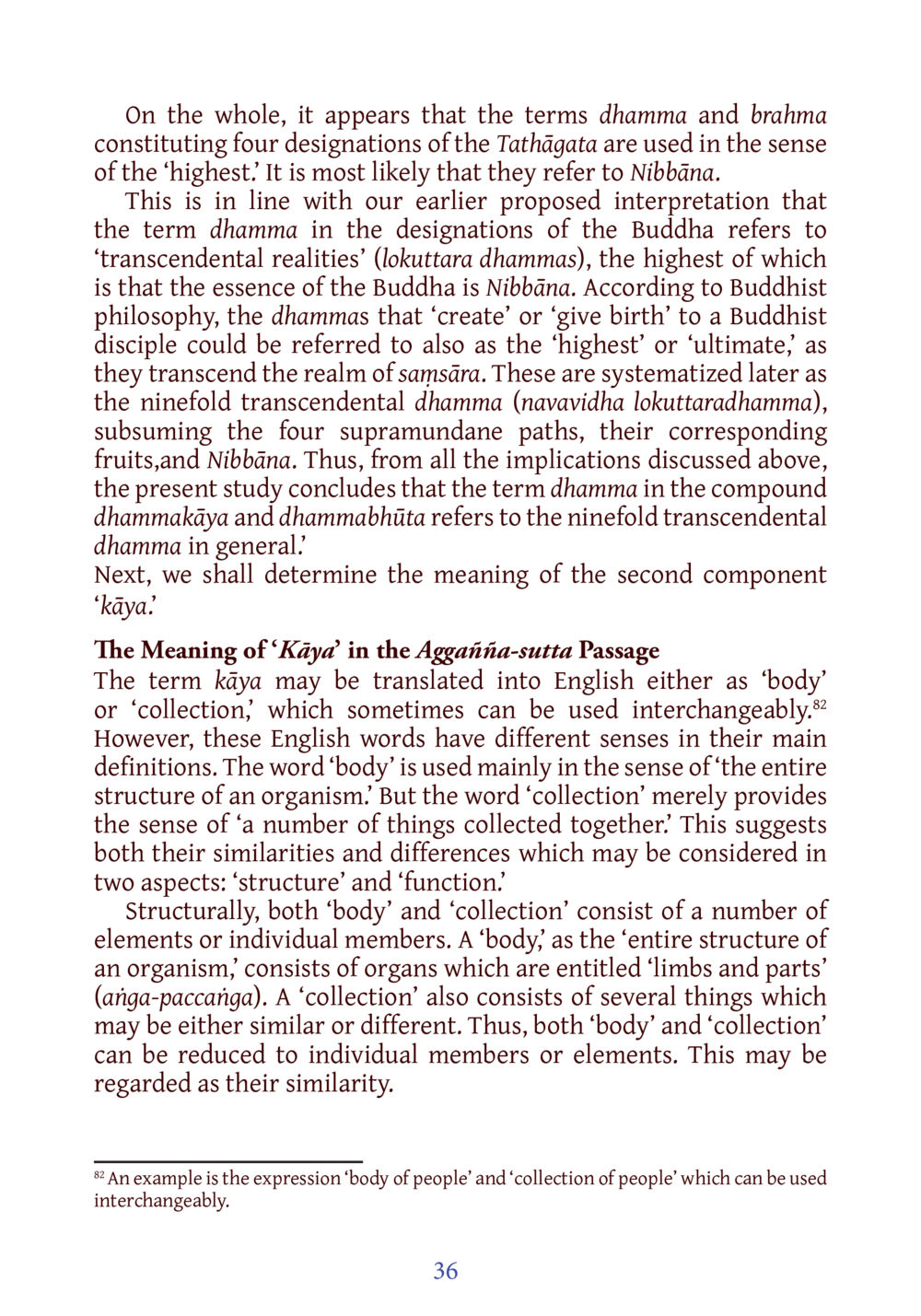The Concept of Dhamma and Kāya in Buddhist Philosophy : หน้า 57/141
DIRI Journal : หน้า 57/141 Exploration of the terms dhamma and kāya in Buddhism, focusing on their meanings and implications concerning Nibbāna and transcendental realities.
4 ครั้ง

สรุปเนื้อหา
This study examines the terms dhamma and brahma, suggesting that they refer to the highest aspect of Tathāgāta, likely Nibbāna. The term dhamma denotes transcendental realities, transcending the realm of samsāra. The discussion introduces the ninefold transcendental dhamma and their relation to the essence of the Buddha. The text also analyzes the term kāya, translated as either ‘body’ or ‘collection,’ emphasizing their structural and functional similarities and differences. Both terms encapsulate a collection of individual elements, enriching the understanding of Buddhist philosophy regarding the nature of existence. The exploration leads to a nuanced interpretation of dhammakāya and dhammaBhūta in this context, preparing the ground for further understanding of Buddhist teachings.
หัวข้อประเด็น
-Dhamma and Brahma
-Concept of Nibbāna
-Transcendental Dhammas
-Meaning of Kāya
-Structural vs Functional Aspects of Terms
ข้อความต้นฉบับในหน้า
หน้าหนังสือทั้งหมด













































































































































